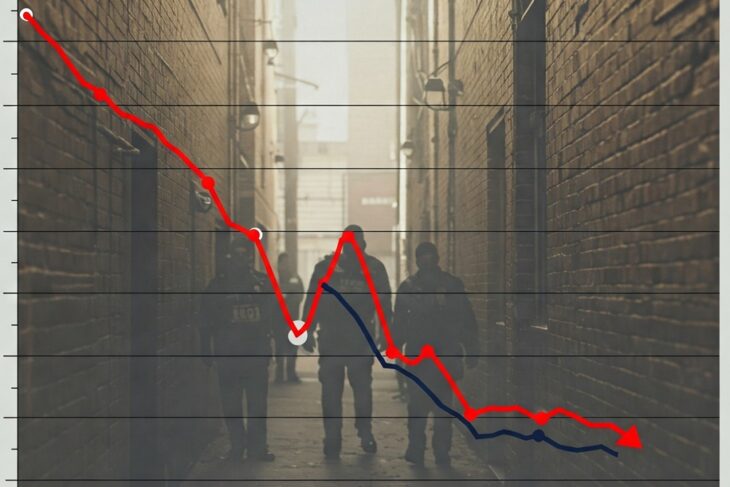
How does an equation of something that is subjective plus,something else that is subjective equal to something that is wholly objective? Does such a schema or does such a syllogism comport with the established laws of logic? Again, how about something that is clearly political added to another that is seen as political arrive at a sum that is totally apolitical? This writer readily admits that such “new mathematics” is well beyond his ken. But, if you, his reader, are able to divine an answer that approximates sanity then you will have solved the chemical makeup of the United States Supreme Court. Such an achievement would be on par with piercing the mysteries of a black hole.
Republicans tend to appoint judges with, so called, “Conservative” leanings, and Democrats, on the other hand, are, almost always, of a mind to appoint those with so called “Liberal” leanings in order to seek, to secure, and to sustain their respective visions or versions of truth and justice. At what point, this writer wonders, do such appointees, after they have weathered the fractious and factious storms of the nomination and confirmation processes — with their long or short records of biases, and which are as plain to the unsighted as they are to the sighted — become transformed into icons of virtue which are the envy of cherubims and, conversely, the scourge of demons?
Again, what of the said politicians, when they behave like labourers working in a cannery, seeking to “pack the courts” as those who would do so with sardines in a tin in order to tip the scales of justice in their favour? What of those who toy and who tinker with the number of judges on the bench with a view towards the same end? The number of Justices on the Supreme Court changed six times before settling at the present total of nine in 1869. There was talk in the Biden Administration about the possibility of expanding the court but that was, thankfully, shelved. That idea, to this writer, was as one seeking an elusive high in a chronic state of drug addiction.
The Supreme Court is made up of individuals who claim to understand the concept of the “separation of powers” but who have shown, over the centuries since the nation’s founding, that they are often confused about or forgetful of what their actual role is, as a court, within the three branches of government. One moment they behave like members of a judiciary, and then, in the next, when they, perhaps, are experiencing hangovers from too much liquor, or from blinding migraines, or from symptoms of gastrointestinal tempests — behave like legislators or as a de facto Cabinet in the administrative branch. And then they wonder why nobody likes or even trusts them!
And now….and now….we come to it, to that annoying and unsettling mouse which enters the house, nibbling at the cheese, here a little, and then there a little, ever changing its shape — stare decisis! Or….or….here is another introduction — the marauding bull which pushes this way and then that, strenuously, and at times, awkwardly, within the delicate and the fragile arrangement of a Bone china shop — stare decisis! This bit of legalese, which, on the surface, to unfamiliar and to untrained senses, may come across as judicial esoterica, is, simply, in layman’s terms — “legal precedent”. It is the legal opinion of a few that can, and that often does, override the collective opinion of the many.
Stare decisis, a Latin phrase meaning “to stand by things (previously) decided,” refers to a legal doctrine that obligates courts to follow historical cases when making a ruling on a similar case. Stare decisis ensures that cases with similar scenarios and facts are approached in the same way. Simply put, it binds courts to follow legal precedents set by previous decisions. In the United States the Supreme Court and the state supreme courts are considered as carrying precedential authority in their rulings, although precedent is sometimes established by a lower court. A primary purpose of following the doctrine of stare decisis is to help ensure uniformity and fairness in the application of the law.
Once a court has made a ruling concerning a matter of law, lower courts in the same jurisdiction are bound to follow the ruling in their own decisions, barring a different subsequent ruling by the higher court. There are times, like gusts of winds blowing in this direction and then that, when a court disregards stare decisis, for one reason or another, and sets for itself new precedents. And, having created a commanding body of precedents, it often times reverses itself — by changing its mind. For years it might have traffic going down a two-way street, and then, in a few short minutes, it can have traffic going down a one-way street. This is an accepted part of American judicature — rulings which can help or which can hurt, depending on which side of the political fence one finds oneself.
The intricacies of stare decisis, if one is willing to accept it in principle, seems then, to this writer, and, perhaps, to a few others in this land, to depend not only upon a prodigious legal knowledge, upon razor sharp judicial analysis or skill, upon an acute sensitivity to the challenges faced by the body politic on a day-to-day basis, but also upon an impeccable and an unimpeachable integrity which safeguards true objectivity. But with the polarized landscape out of which the Supreme Court Justices and other federal judges are nominated, are confirmed and are sworn in for service, for the remainder of their natural lives mind you, is true justice attainable, and, if so, is it also sustainable? And, to top everything off — there have been bad laws which had to be repealed, like African American chattel slavery for example, and rightly so. But, stare decisis in the wrong hands, in an act of reversal, could seek to put the descendants of slaves back into slavery and seek to strip Native Americans of their rights as citizens and of all their property.
Those, of course, are just extreme examples, and just two of many constitutional protections among a plethora of rights — hard fought and hard won — which can be stopped on a dime by stare decisis. And so, this doctrine is no laughing matter for anyone — whether one finds oneself on the political right, the political left, the political centre, the political right of centre, or the political left of centre.
As this nation is wary of the influences of international organizations like the United Nations, with its legal arm of the World Court based in The Hage, then the appeals of citizens in such a partisan clime in the hope of more objective or unbiased rulings must continue to rest upon the shoulders of men and women, born into and shaped by the forces which are at work in it in positive and in negative ways. Hence, this contributes, in far reaching ways, to the tenuous nature of this American democratic experiment.
This writer ends this piece with a quotation from A proclamation by the pigs who controlled the government in the novel, Animal Farm, which was written by George Orwell. The sentence is a comment on the hypocrisy of governments that proclaim the absolute equality of their citizens but give power and privileges to only a small elite. It is reality here in America today, and, in truth, a painful one that has been with this country from its founding in 1776:
“All animals are equal, but some animals are more equal than others.”



